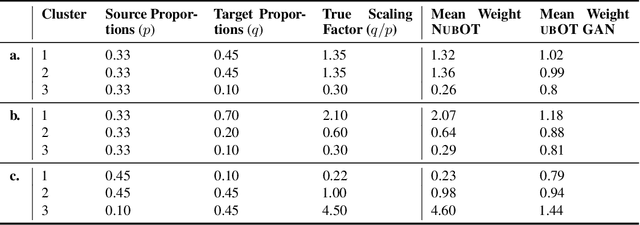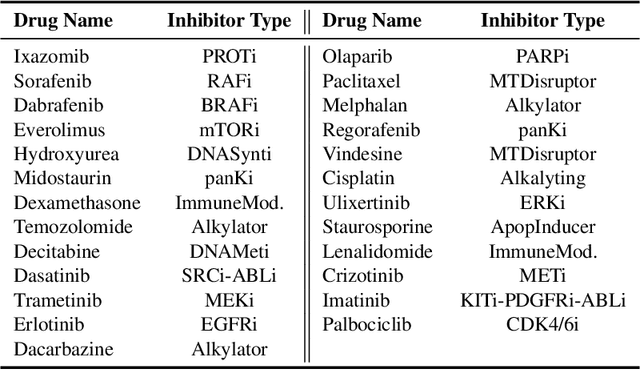Lucas Pelkmans
Neural Unbalanced Optimal Transport via Cycle-Consistent Semi-Couplings
Sep 30, 2022



Abstract:Comparing unpaired samples of a distribution or population taken at different points in time is a fundamental task in many application domains where measuring populations is destructive and cannot be done repeatedly on the same sample, such as in single-cell biology. Optimal transport (OT) can solve this challenge by learning an optimal coupling of samples across distributions from unpaired data. However, the usual formulation of OT assumes conservation of mass, which is violated in unbalanced scenarios in which the population size changes (e.g., cell proliferation or death) between measurements. In this work, we introduce NubOT, a neural unbalanced OT formulation that relies on the formalism of semi-couplings to account for creation and destruction of mass. To estimate such semi-couplings and generalize out-of-sample, we derive an efficient parameterization based on neural optimal transport maps and propose a novel algorithmic scheme through a cycle-consistent training procedure. We apply our method to the challenging task of forecasting heterogeneous responses of multiple cancer cell lines to various drugs, where we observe that by accurately modeling cell proliferation and death, our method yields notable improvements over previous neural optimal transport methods.
Mathematical foundation of sparsity-based multi-illumination super-resolution
Feb 22, 2022Abstract:It is well-known that the resolution of a traditional optical imaging system is limited by the so-called Rayleigh limit, which is of several hundreds of nanometers. By employing fluorescence techniques, modern microscopic methods can resolve point scatterers separated much lower than the Rayleigh limit. Localization-based fluorescence subwavelength imaging techniques such as PALM and STORM can achieve a spatial resolution of several tens of nanometers. However, these techniques have limited temporal resolution as they require tens of thousands of exposures. Employing sparsity-based models and recovery algorithms is a natural way to reduce the number of exposures and hence obtain high temporal resolution. Recently, a new multi-illumination imaging technique called Brownian Excitation Amplitude Modulation microscopy (BEAM) is introduced. BEAM achieves a threefold resolution improvement by applying a compressive sensing recovery algorithm over only few frames. Motivated by BEAM, our aim in this paper is to pioneer the mathematical foundation for sparsity-based multi-illumination super-resolution. We consider several diffraction-limited images from samples exposed to different illumination patterns and recover the source by considering the sparsest solution. We estimate the minimum separation distance between point scatterers so that they could be stably recovered. By this estimation, we reveal the dependence of the resolution on the cut-off frequency of the imaging system, the SNR, the sparsity of point scatterers, and the incoherence of illumination patterns. Our theory particularly highlights the importance of the high incoherence of illumination patterns in enhancing the resolution. It also demonstrates that super-resolution can be achieved using sparsity-based multi-illumination imaging with very few frames, whereby the spatio-temporal super-resolution becomes possible.
 Add to Chrome
Add to Chrome Add to Firefox
Add to Firefox Add to Edge
Add to Edge